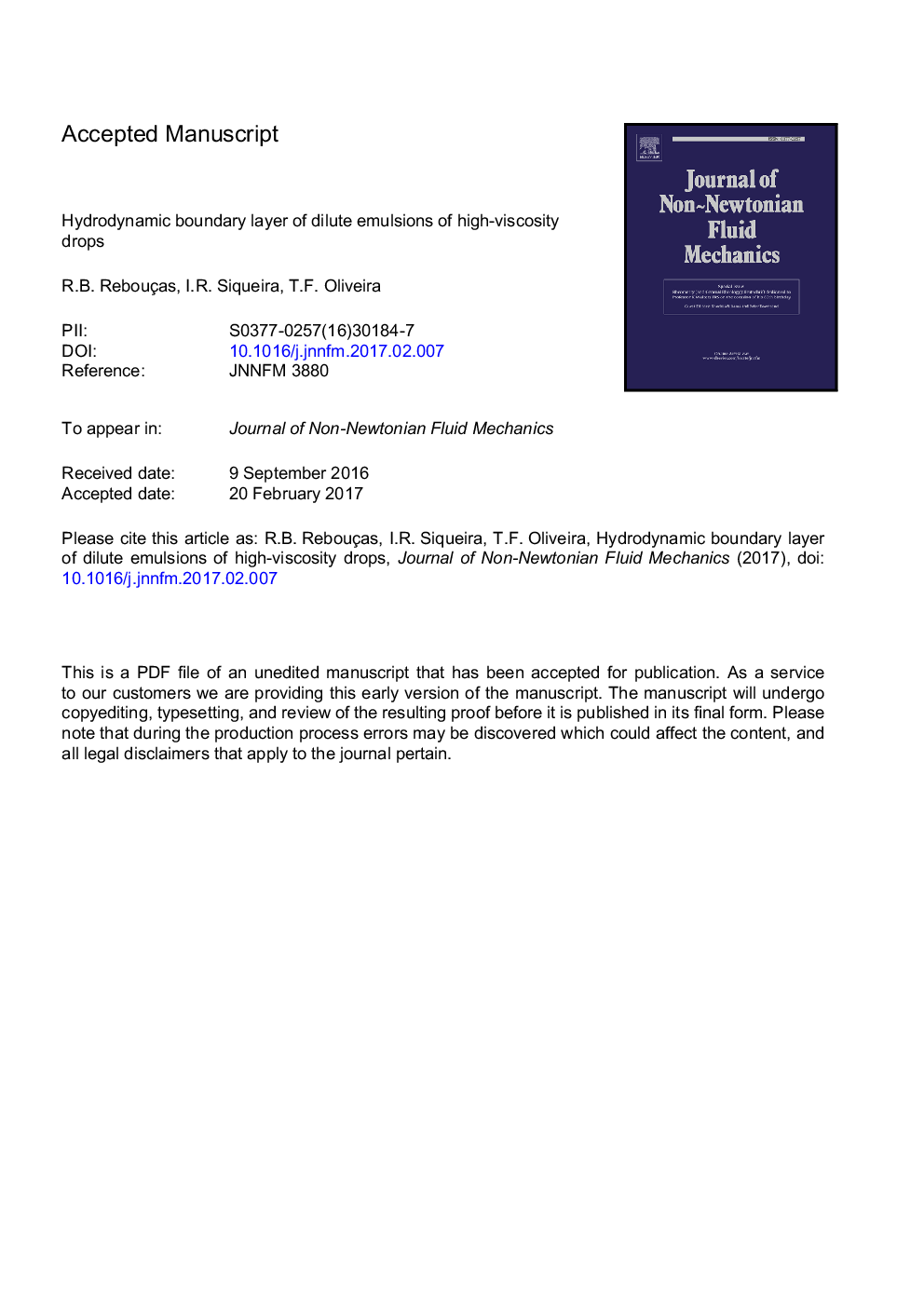| Article ID | Journal | Published Year | Pages | File Type |
|---|---|---|---|---|
| 4995551 | Journal of Non-Newtonian Fluid Mechanics | 2017 | 33 Pages |
Abstract
This work investigates the viscous boundary layer in the flow of emulsions over a flat plate. A continuous constitutive model is employed to describe the macroscopic flow of dilute emulsions of high-viscosity drops that experience a regime of small surface deformation. The classical boundary layer hypothesis is applied to obtain a mathematical formulation for the flow within the emulsion boundary layer. The numerical results obtained with a stabilized Finite Element Method show that the dimensionless velocity profiles in the emulsion boundary layer are self-similar. Then, we perform an integral formulation of the emulsion boundary layer equations, which leads to a first-order, non-linear ordinary differential equation for the boundary layer thickness along the plate. We also investigate the existence of a pressure gradient in the cross-plate direction arising to balance elastic stresses in the emulsion boundary layer. The formulation developed here is used to study the effects of the capillary number of the flow on the boundary layer of such a complex fluid.
Related Topics
Physical Sciences and Engineering
Chemical Engineering
Fluid Flow and Transfer Processes
Authors
R.B. Rebouças, I.R. Siqueira, T.F. Oliveira,
